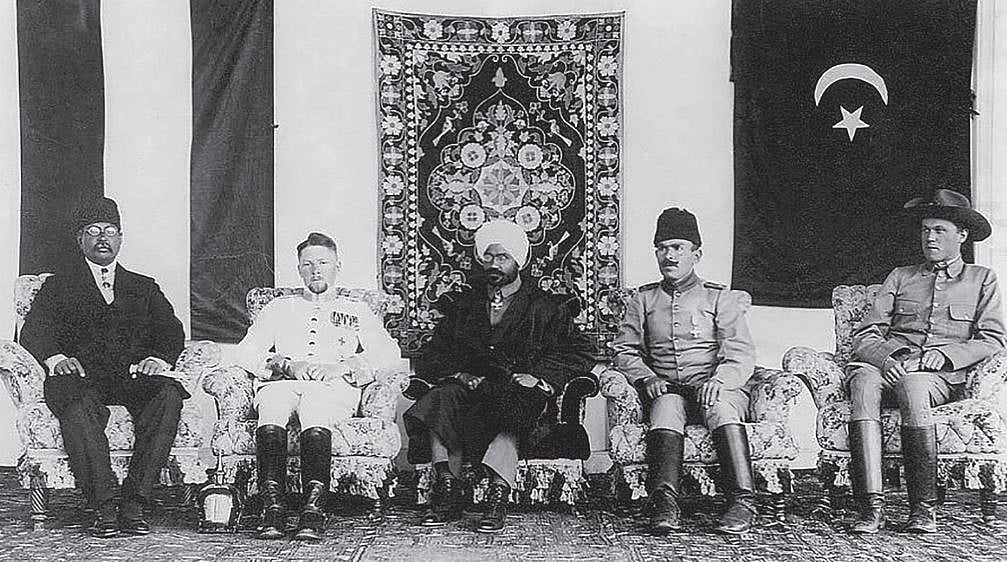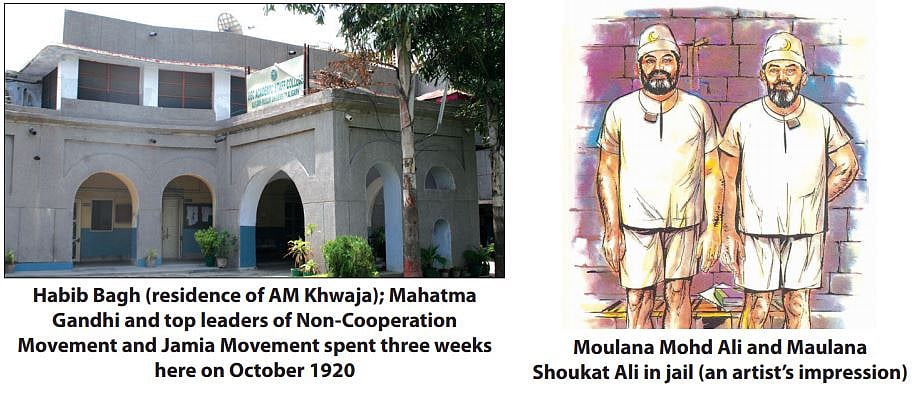Discord at Jamia: Watershed in Modi govt’s fragile link with country’s largest religious minority
Muslims, academics were at forefront of freedom struggle, which led to formation of Jamia Millia University. That part of history is not just forgotten but is now under siege

The ongoing public agitation against the Citizenship Amendment Act in and around the campus of the Jamia Millia Islamia is no ordinary campus protest. It marks a watershed in the Modi government’s fragile link with the country’s largest religious minority group.
Both Jamia Millia Islamia and the Aligarh Muslim University remain closed today, more than a fortnight after peaceful protests culminated into chaos. The police in both cases, while confronting the protesters, threw caution to the wind and grossly overreacted.
There are still very few signs that the factors, which have led to the social upheaval in these two minority institutions, are being addressed or are likely to be addressed in the near future. In fact, the ruling dispensation is trying to gloss over campus discontent in some of the most prestigious institutions of higher learning in several parts of the country.
The Jamia Millia Islamia was born from the womb of a singular strain of the broader Aligarh Movement. The raison d’être behind its birth was the fact that the Aligarh Movement, which primarily began as a social and educational movement in the late nineteenth century India, started acquiring a political hue at the turn of the twentieth century when some prominent Muslims, who were closely associated with the Mohammedan Anglo-Oriental (MAO) College, also got involved with the Muslim League.

This move, however, had triggered off a very strong and sustained counter movement within the Aligarh school. It was led by revolutionaries like Hasrat Mohani, and was later joined by a very powerful and dominant section of the Board of Trustees of the Aligarh Muslim University, including Maulana Mohammad Ali, TAK Sherwani, Maulana Shaukat Ali, A M Khwaja, and others for whom the idea behind establishing Jamia and thereby plunging into the core of India’s Freedom Movement had turned into an article of faith.
The Jamia Millia Islamia was born at the Jama Masjid in the heart of AMU campus on October 27, 1920. The tumultuous events which took place in the city of Aligarh between October 10, 1920 and the first week of November 1920, can arguably be considered amongst the most critical phases in the building of Indian nationhood.
It is a chapter now more or less forgotten, but it is now time to revisit it and understand those fragments of history which can help twenty-first century India to trace the genesis of India’s nationhood.
After Gandhiji addressed the highly charged gathering at the AMU’s Jama Masjid, Maulana Mahmoodul Hasan, perhaps the highest-ranking Islamic theologian of his era, was called upon to offer his blessings on the occasion of the formal announcement of establishment of Jamia Millia Islamia. The Maulana, who was popularly addressed as the Sheikhul Hind (the high priest of Islamic theologians of India) could barely stand up but he nonetheless recited a verse from the Quran to mark the occasion.
The first week of October 1920 was a low phase in India’s freedom struggle. The freshly started Khilafat Movement was failing to take off. The Government of India had a few weeks earlier become so smug that it decided to release from jail a number of stalwarts of the freedom movement including Maulana Mohammad Ali.
Gandhiji had not been able to persuade Pandit Madan Mohan Malviya, the founding father of the Banaras Hindu University to close down his institution and join Gandhiji’s Satyagrah. Malvia obviously feared that joining the satyagrah could pose an existentialist challenge to the newly formed institution.
On October 2, a meeting of prominent alumni of the Mohamaden Anglo Oriental college (which later became the Aligarh Muslim University) and some top leaders of the freedom movement was held at Moradabad.
The meeting passed a resolution spearheaded by Maulana Mohammad Ali urging the trustees of the MAO College and the Banaras Hindu University to stop accepting grants from the central government and disaffiliating themselves from the government. Maulana Mohammad Ali declared, “We want complete Swaraj, even if the careers of students are to be sacrificed”.

On October 11, Gandhiji, and a large number of Muslims associated with the freedom movement, including Dr Mukhtar Ahmad Ansari, Maulana Abdul Bari Firangimahli, Maulana Suleman Nadvi, Maulana Husain Ahmad Nadvi, Tasadduq Husain Khan Sherwani, Mohammad Ismail Khan and Chaudhary Khaliquzzaman, descended upon Aligarh with the affirmed objective of persuading the MAO College to join the boycott call.
On the next day, Gandhiji was invited to address the Students’ Union of the MAO College. The overwhelming response which he received in those few hours is a matter of history.

Gandhiji’s presence at the MAO College campus had electrified not just students of the college but sent ripples all over India. Gandhiji and his close associates decided to camp at Aligarh where, for more than two weeks, they remained at the house of Abdul Majeed Khwaja, where it was a period of hectic activity.
The students of the MAO College, almost to the last member, responded to Gandhiji’s call and by the end of October, the hostels of MAO College had been completely evacuated. The police had been deployed all around the campus and there was a state of near siege like situation.
Under Gandhiji’s leadership, a large number of Muslim women at Aligarh, including Begum Khursheed Khwaja, wife of Abdul Majeed Khwaja, publicly set afire all foreign made garments and took an oath to launch “complete Swaraj”. In Aligarh, Muslim women handed over all their jewelry to Gandhiji as a contribution to the national fund for the cause of India’s freedom. Aligarh had shown the way and the rest of India responded.
For nearly five years, the Jamia Millia Islamia which began functioning from Aligarh, lurched from one crisis to another. Maulana Mohammad Ali who as the Vice Chancellor was so deeply involved in the Non-cooperation Movement, that he handed over charge to Abdul Majeed Khwaja.
For nearly five years, Khwaja managed the affairs of Jamia. When he was sent to jail, his wife, Begum Khursheed Khwaja, shared the responsibility of somehow sustaining the new-born institution. Later when Jamia was shifted to Delhi, Dr Zakir Hussain, Hakim Ajmal Khan and Dr Mukhtar Ahamad Ansari stepped in to save this institution from what often seemed like imminent closure. The aforementioned Maulana Mahmoodul Hasan, who was in many ways the spiritual father of the Jamia Millia Islamia, was also the patron of India’s first government in exile established in Kabul in 1915.
A landmark chapter in India’s freedom movement was the Reshmi Rumal Tehreek or the Silk Conspiracy Case; if anybody could be called the real leader of it, it was the Maulana. He was at that time the head of the Deoband theological school and was arrested from Saudi Arabia in May 1916 by the British government, along with his right hand man, Maulana Hussain Ahmad Madni.
The conspiracy was foiled at the last moment when a conspirator who was carrying the message written on a handkerchief was arrested in Punjab by the police.
This was one of those few letters which were being exchanged between Maulana Mahmoodul Hasan, then in Saudi Arabia, and the members of the Government in Exile in Kabul, which was formed with the avowed aim of organising an armed revolt in India with the help of the governments of Germany, Turkey and Afghanistan. Raja Mahendra Pratap, a famous alumnus of the Aligarh Muslim University was its President, Maulana Barkatullah of Bhopal was its Prime Minister and Maulana Obaidullah Sindhi was the Home Minister.
Maulana Hasan and Maulana Madni, along with about three dozen members of the Muslim clergy were sent to the remote island of Malta where they stayed for more than two years as prisoners of war, which was more like a concentration camp. When they were released in 1918, Maulana Mahmoodul Hasan’s health was in shambles and soon after he had offered his blessings to the Jamia Millia Islamia, he passed away.
It would therefore be an appropriate moment to look back and remember what took place in Bombay on June 8, 1920. It was on this day that thousands of Indians led by Mahatma Gandhi had collected at the Bombay docks to accord a hero’s welcome to a group of Muslim theologians, led by Maulana Mahmoodul Hasan, who were returning after internment at Malta. Gandhiji had come from Ahmedabad to receive them. All these members of Muslim clergy belonged to the Deoband’s theological school and there were concerns regarding their future course.
The Government of India was very keen that the Maulana and his colleagues would have taken heed to the years of their confinement and would rebuff the overtures by leaders of the Indian National Congress. As soon as Maulana Mahmoodul Hasan stepped on the shore, he was embraced by Gandhi Ji, and after a brief emotional exchange, the Maulana is said to set all speculations to rest regarding his future political plans.
Although the exact words may not have been recorded, there are several eyewitness accounts which record this historic moment. The Maulana is said to have uttered a few words to Mahatma, “Rest assured, the Muslims and Hindus are fully behind you in your non-violent struggle for complete swaraj”.
It is an irony that today the descendants of these Jamia revolutionaries are subjected to humiliation and police brutalities and even their citizenship is under question. In this highly charged atmosphere, it is imperative that the Jamia community pauses, introspects before moving ahead.
There is no denying that the forces unleashed by the enactment of the CAA and the decision to introduce the NRC may have a polarising impact on Indian society and there are genuine fears that if not checked on time, it could ultimately lead to radicalisation of Muslim youth. This turn in the political discourse would be tragic both for Indian Muslims, and the country as a whole.
The idea behind the Jamia movement had taken birth on that day, a century ago. It is this idea of our composite pluralistic India, which the Jamia community is today striving to live up to.
The Jamia movement was based on the dream of a free New India.
It is this dream which is under siege today.
Follow us on: Facebook, Twitter, Google News, Instagram
Join our official telegram channel (@nationalherald) and stay updated with the latest headlines
